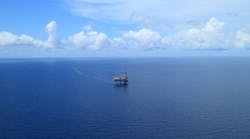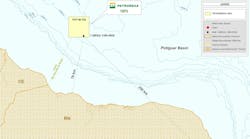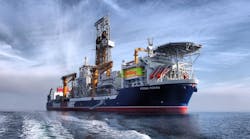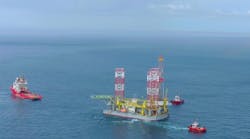Offshore staff
ABERDEEN, UK – Some drilling equipment on modern deepwater rigs may not be optimal for wells in shallower water, particularly in harsh environments such as the North Sea.
According to Wood Group Kenny drilling and wells manager, speaking atDOT, the gradual phasing out of older rigs has increased dependence in the North Sea on the newer high-spec deepwater semis that are designed to accommodate larger, more robust BOP systems.
Typically, third generation North Sea workhorse rigs feature 200-ton BOP stacks, whereas sixth generation rigs designed for operations in 500 m (1,640 ft) and beyond are often equipped with 500-ton systems better suited to high-pressure/high-temperature and deepwater wells.
However, the larger stacks can have a detrimental effect in shallower water drilling in terms of wellhead/conductor fatigue, Wood Group Kenny’s screening studies suggests.
In his DOT paper, Williams said:
“Many wells in mature fields were not designed to take into account loads from larger BOP stacks…This will have an impact on fatigue loading and will have implications on the feasibility of extending the life of existing wells.”
Wave-induced fatigue loading can be generated by direct and indirect loading of the riser system. According to Williams, “Direct wave action on thedrilling riser string, particularly at short periods close to the natural period of the string, can result in oscillations of the riser system.
“These oscillations are then transferred to the wellhead and conductor system via the BOP stack. Deepwater riser systems will tend to have a natural frequency of six to eight s, and thus if a large volume of wave occurrences have periods in this range, even at relatively low wave heights, the accumulated damage in the wellhead and conductor system can be significant.”
It is a problem that the industry in general did not foresee, he claimed, although there are exceptions, he added, such as Statoil’s new CAT D rigs that have been designed for intensive drilling and workover campaigns on the Norwegian continental shelf. “These rigs have been designed to optimize performance in mid-water to shallow water depths and have smaller BOP stacks than modern deepwater rigs.”
Wood Group Kenny’s studies have also found that BOP motions and damage to the conductor system can be mitigated in the North Sea by switching to larger OD (e.g. 42-in) conductors where possible for new wells. However, for workover or re-entry on older wells (the norm being 30-in.) this will not be an option.
Another solution, Williams suggested, might be for drilling contractors to alter the schedules of the newer types of rigs in the North Sea to avoid the worst of the weather, and adding instrumentation to their riser systems to monitor BOP/riser interactions.
Monitoring equipment could also incorporate stress transfer functions to maintain checks on the motion/stress relationship in real time. “You could have finite element models built into the system to calculate the likely stresses and associated fatigue in real time”.
“So it is possible in certain cases to use ‘non-optimal’ rigs, but you must be aware of the pitfalls.”
10/23/2014




